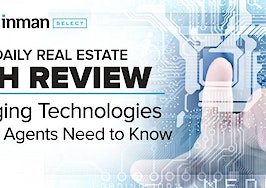- On Oct. 3, 2015, new integrated Truth in Lending and RESPA disclosures take effect for most residential real estate transactions.
- When it comes to disclosing fees under the TILA-RESPA Integrated Disclosure (TRID) rule, lenders are held to a good faith standard.
- As is the case under current law, the TRID rule identifies three categories of tolerance thresholds: zero tolerance, 10 percent cumulative tolerance and no or unlimited tolerance.
Tomorrow, new integrated Truth in Lending Act and RESPA disclosures take effect for most residential real estate transactions. The new disclosures were drafted to facilitate consumer shopping, and clients will certainly have questions.
Here’s how you can explain settlement service fees and the tolerances for variations in fees, from application to closing.
When it comes to disclosing fees under the TILA-RESPA Integrated Disclosure (TRID) rule, lenders are held to a good faith standard. This good faith standard is measured, in part, by comparing what was disclosed on the Loan Estimate or Revised Disclosure, with what the consumer actually pays at consummation.
If the consumer pays more at consummation, that particular fee is considered not to have been disclosed in good faith unless it falls within specific tolerance limits.
Let’sl review the TRID rule tolerance categories and the types of fees that are subject to each category.
Fee tolerances generally
As is the case under current law, the TRID rule identifies three categories of tolerance thresholds: zero tolerance, 10 percent cumulative tolerance and no or unlimited tolerance.
These thresholds apply to the fees disclosed on page two of the Loan Estimate under the loan costs and other costs sections. Loan costs consist of origination fees, fees for required services that cannot be shopped for, and fees for required services that can be shopped for.
Other costs consist of taxes and other government fees, pre-paid fees, the initial escrow payment at closing and any other cost the creditor is aware of for services not required by the creditor.
Zero tolerance
Fees in the zero tolerance threshold category cannot increase from the Loan Estimate to the Closing Disclosure without being a tolerance violation. The only exception would be if a fee increase is due to one of the triggering events under the law for issuing a revised Loan Estimate.
In that case, the fee disclosed on the revised Loan Estimate will be compared to the fee disclosed on the Closing Disclosure for good faith purposes.
The reason fees in the zero tolerance category are so restricted is that typically these are fees for services the creditor has control over or has access to actual fee amounts.
Because of this control or access, the TRID rule believes creditors should be in a position to disclose accurate information and not need any tolerance cushion.
Fees subject to the zero tolerance category include those fees that are paid to the creditor, the mortgage broker or an affiliate of either party. Common fees in this category would include any origination fees imposed.
Again, these are fees for services under the creditor’s control and the expectation is that the amounts will be readily available. Note that a fee or charge is considered paid to the creditor, mortgage broker or an affiliate if it is retained by that person or entity.
When are charges not paid?
A charge is not paid to one of these entities when it receives money but passes it on to an unaffiliated third party.
Also note that the term “affiliate” is given the same meaning it has for purposes of determining Ability-to-Repay and HOEPA coverage and that is: any company that controls, is controlled by or is under common control with another company, as set forth in the Bank Holding Company Act of 1956.
Zero tolerance fees
In addition to origination fees, another class of zero tolerance fees include those paid to unaffiliated service providers for required services that the consumer cannot shop for.
So, if the consumer cannot pick the provider for a particular service, the creditor selecting that provider is presumed to be in a position to obtain accurate fee information. The downside of not allowing a borrower to shop for a settlement service provider is the zero tolerance consequence.
One final type of fee subject to zero tolerance is transfer taxes. In general, transfer taxes are state and local government fees on mortgages that are based on the loan amount or sales price.
Note that the name used under state or local law to refer to these amounts is not indicative of whether they are disclosed as transfer taxes or as recording fees and other taxes.
With respect to transfer taxes, the Consumer Financial Protection Bureau has commented that those schedules are readily accessible and amounts don’t often fluctuate. Therefore, it is believed that creditors should be able to disclose transfer taxes accurately and not need any tolerance cushion.

10 percent cumulative tolerance
A second tolerance category is referred to as the 10 percent cumulative tolerance. Here, all fees that are under this umbrella are added together. As long as the total that is disclosed on the Loan Estimate does not increase by more than 10 percent from the total disclosed on the Closing Disclosure, that grouping of fees is considered disclosed in good faith.
Here, you might find that a particular fee increases significantly — but again, the focus isn’t on the individual fee; it is on the cumulative effect.
Recording fees
Fees subject to the 10 percent cumulative tolerance threshold include all recording fees. Recording fees are those fees assessed by a government authority to record and index the loan and title documents as required under state or local law.
Recording fees are assessed based on the type of document to be recorded or its physical characteristics, such as the number of pages. So unlike transfer taxes, recording fees are not based on the sale price of the property or loan amount.
Third-party service fees
A second class of fees within the 10 percent cumulative category includes fees for required third-party services where the consumer is permitted to shop for the provider and the consumer picks a provider from your written list of service providers.
So first of all, we are talking about fees for required services paid to a party other than the creditor or an affiliate. At the Loan Estimate stage, these fees were listed as fees that the consumer may shop for. And finally, come consummation, it is determined that the consumer selected a provider from your written list of service providers.
By selecting a provider from your list, the consumer has not shopped, and the fee for this service would be disclosed on the Closing Disclosure as a fee the consumer did not shop for.
Again, whether an individual estimated charge subject to the 10 percent tolerance threshold is in good faith depends on whether the sum of all charges subject to this category increases by more than 10 percent.
Remember, we’re not considering whether an individual fee increases by 10 percent. Lenders may charge more than 10 percent for an individual estimated charge in this category, so long as the sum of all charges remains within the 10 percent cumulative tolerance.
No or unlimited tolerance
The third category of fee tolerance thresholds involves fees that are not subject to any tolerance limits at all. These are no tolerance or unlimited tolerance. Recognize that all fees in this category can increase by any amount; however, they still must be disclosed in good faith using the best information available at the time of disclosure.
Generally, fees in the no tolerance category include those creditors have little control over, so it makes sense not to subject them to strict tolerance requirements.
Specifically, fees in the no tolerance category include items disclosed as other costs, and those are prepaid interest, property insurance premiums and amounts placed into the initial escrow account.
From there, we also have fees for services that the consumer could have shopped for; however, the consumer selected a provider that was not on the creditor’s written list of service providers.
So at the Loan Estimate stage, a fee for a service the consumer can shop for is included in the 10 percent cumulative category. However, if the consumer selects a provider not on the creditor’s list, the fee for that service shifts from 10 percent cumulative to no tolerance.
By not selecting a provider from the list, the consumer has, in essence, shopped, and the fee for that service will be disclosed on the Closing Disclosure as one the consumer did shop for.
A final class of fees subject to a no tolerance threshold includes fees for services not required by the creditor. In this situation, it is acceptable for the service to be performed by an affiliate.
Examples of fees that might be considered no tolerance items include various inspection services not required by the creditor or perhaps an owner’s title insurance policy.
Compliance considerations
Do not confuse zero tolerance with no tolerance. Remember, zero tolerance items cannot increase at all from the Loan Estimate to the Closing Disclosure. No tolerance items can increase by any amount as long as disclosed in good faith.
Exercise care with zero tolerance items. Ensure that providers of services that cannot be shopped for are providing accurate, reliable fee information. Absent a change in circumstance or another type of revised Loan Estimate triggering event, increases in that fee will result in a lender credit.
Monitor consumer behavior. With respect to services that may be shopped for, the tolerances for those fees may shift from the Loan Estimate to the Closing Disclosure.
If the consumer selects a provider from the creditor’s written list of service providers, that fee remains in the 10 percent cumulative category. If the consumer selects a provider that is not on the written list, that fee shifts from 10 percent cumulative to no tolerance.
Monitor for changed circumstances. Revised Loan Estimates are permitted in situations involving a change in circumstance. Be sure to monitor for the receipt of any information that increases fees and that may be used to justify a revised Loan Estimate.
A revised Loan Estimate under one of the TRID rule triggering events allows the creditor to re-set impacted fees and rely on the revised Loan Estimate for purposes of their good faith analysis.
Fee decreases do not impact tolerance rules. As long as disclosed in good faith, a fee may decrease at consummation without regard to the tolerance thresholds. The tolerance provisions only apply to fee increases.
The new disclosure regime is a sweeping change for the mortgage industry that impacts all players. A solid understanding of settlement service fees and tolerances puts you in a position to address client questions and concerns with confidence.
Sue Burt’s thorough knowledge of the bank regulatory environment is based on more than 25 years of industry experience. In her current role with Wolters Kluwer Financial Services, Burt uses her expertise to assist financial institutions in addressing compliance and other operational risk management issues.








